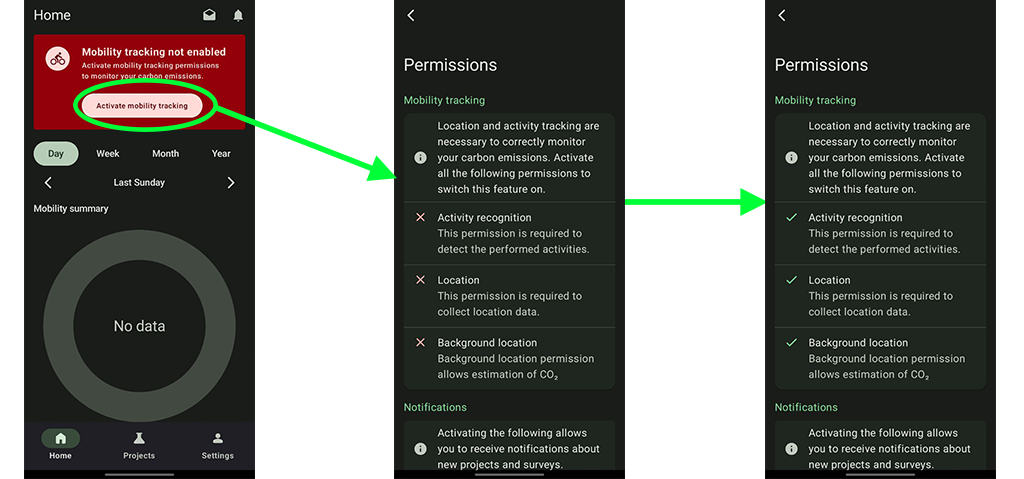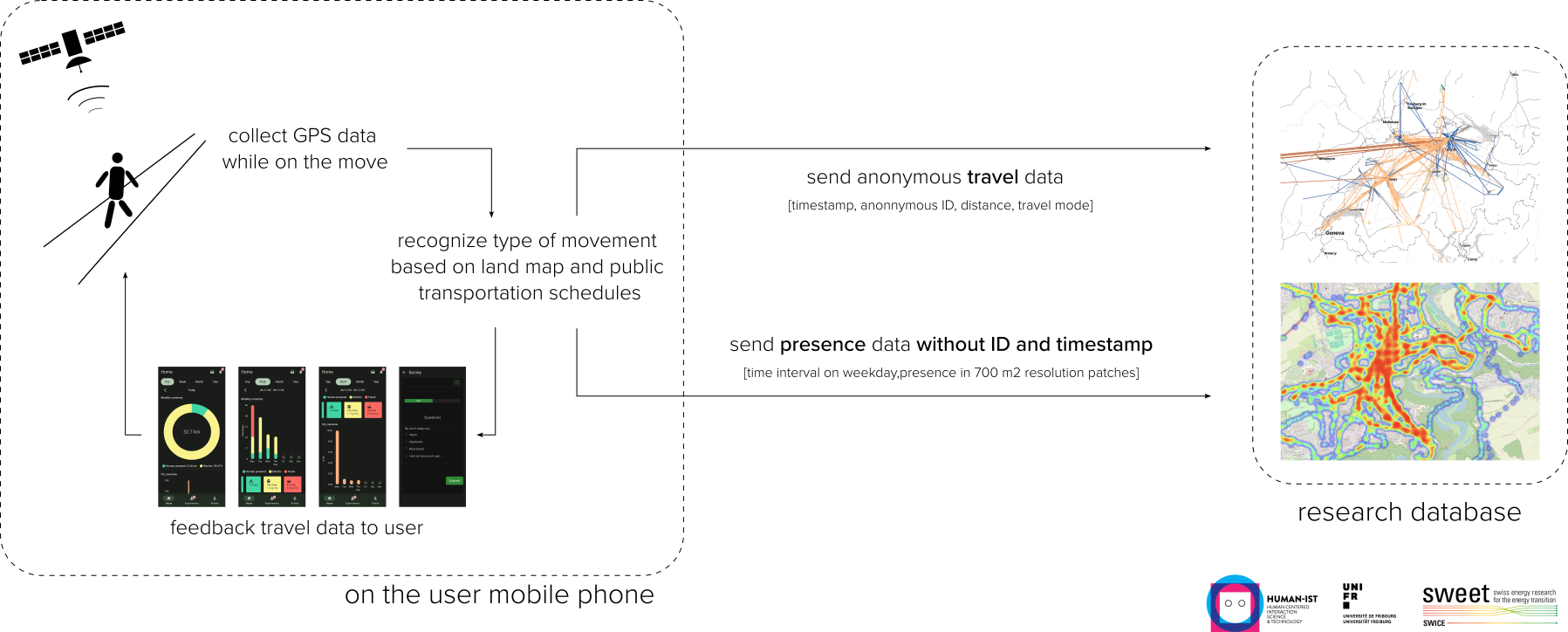SLL Experiment 1
Hello,
thanks for your interest in participating to the SWICE experiment on energy consumption, mobility habits, and community feeling in the BlueHall!
This experiment is open to all people of the Smart Living Lab and is proposed by a small team of researchers from the Human-IST Institute (UniFr) and the Energy Institute (HEIA-Fr) in the context of the SWEET-SWICE project.
You can find here the instructions to participate, and below some more information about the experiment, which will be running between the 2nd of February and the 4th of April 2025.
How to participate
- Install the SWICE App on your smartphone. This will be the point of contact between you and us throughout the duration of the experiment, and will be used to collect some anonymous mobility data and regularly send you messages and short surveys.
- When opening the app the first time, you will see a consent form detailing the data collected through the app. You have to accept it if you want to participate to the experiment.
- Create your pseudonym in the installed app by answering a couple of simple questions.
- Specify that you are enrolled in the Smart Living Lab when asked, so that you will have access to this experiment.
-
Accept all the necessary permissions to receive notifications, register your activity, and location. These are important to send you communications and analyze your personal mobility in an anonymous way.

- In the app, there will be a visualization of your mobility patterns. Do not hesitate to specify your most common modes of transport in the app settings (e.g., specifying that you normally use an electric or hybrid car). Also, do not hesitate to correct incorrectly detected modes of transport.
- Setup done! For about two months, you will sometimes get notifications inviting you to participate to short surveys (except for a single longer one 🥸) and you do not have to do anything special other than that.
Experiment context
The experiment is run as part of the SWEET-SWICE, project, that has the goal to accelerate innovations that are key to implementing Switzerland’s Energy Strategy 2050 and achieving the country’s climate goals.
More precisely, we are running this experiment in the context of WP1: The human dimension of change, where we seek to see what impact can small changes in people's behavior have on different dimensions of sustainability.
This experiment at the SLL focuses on analyzing mobility habits, comfort and energy consumption of people in the BlueHall, and their changes over a period of 2 months (2nd of February - 4th of April).
During the following 2 months, participants are required to use the SWICE mobile app, developed at the Human-IST Institute, where both mobility and survey data is collected in a strongly anonymous way.
Additionally, 3 rooms in the BlueHall (19-20-21B, 22-23C, 43-44-45C) have been equipped with smart plugs and air quality sensors, to analyze the usage patterns of electricity and people's comfort in the offices.
Privacy
All the collected data is privacy-preserving and strongly anonymized, as it is collected using the SWICE app, which was developed following the privacy by design paradigm. More details about this are represented visually in the following figure.
Team
The experiment is led by a small team of researchers from the Human-IST (UniFr) and Energy (HEIA-Fr) institutes.
In case of problems or other, you can write us an email at swice-humanist@unifr.ch.
Additionally, the Building2050 group (part of the SWICE WP8 and serving as Living Lab managers of the Smart Living Lab) is implementing extensive monitoring of the BlueHall building.
In this context, the proposed Living Lab intervention represents an excellent example of the importance of such a precious infrastructure for research projects.
We would thus like to thank the Building2050 group and their IT team - PLM-TI - for their intense collaboration in implementing the IAQ sensors and smart plugs used in this experiment and for ensuring that the acquisition chain correctly stores the data in BBData.

